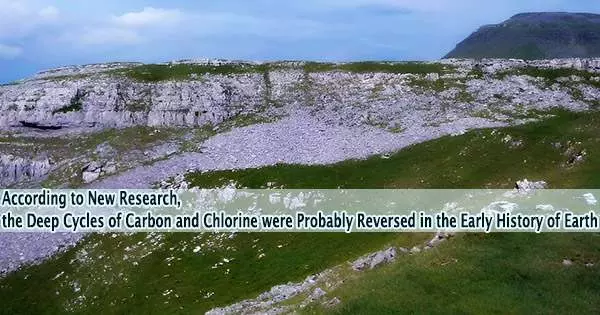Dr. Chunfei Chen, an earth scientist at Macquarie University, has just conducted new research that significantly changes how scientists think about the early Earth. The study gives fresh light on geological events that occurred up to three billion years ago.
The study that was published in Nature sheds light on how the planet’s steady cooling has had a major effect on the deep cycling of carbon and chlorine between the surface and the planet’s interior.
“The cooling of the Earth has caused immense changes in the deep cycles of both carbon and chlorine,” says Dr. Chen. “Today, chlorine typically returns to the surface in volcanic gases, while most carbon is trapped as solid carbonate at depths of hundreds of kilometers; but until the Earth was about two-thirds of its present age, the situation was the complete opposite.”
In the early stages of the planet’s formation, magma predominated on the surface. However, as the planet gradually cooled, crustal plates with a thickness of about 100 km emerged on the surface and slid across the mantle in a process known as plate tectonics.
Sediments trapped in troughs beneath the oceans may have also been forced into the mantle as oceanic tectonic plates fall back into it during subduction zones.
Scientists who are examining the destiny of these sediments in high-pressure melting tests previously studied an average of all oceanic sediments, with carbon as a small component.
This significant research is the first to consider subduction of massive tracts of carbonate sediments, rather than average sedimentary rock even though it is more realistic that huge blocks of carbonate will be involved in plate tectonics.
Professor Stephen Foley
However, the majority of carbon settles as carbonate sediments. The White Cliffs of Dover or the Dolomites in Italy are well-known examples of enormous areas of carbonate sediments on the surface, and these may act differently than carbon tiny sections.
Dr. Chen’s team used high-pressure experiments to simulate the subduction of limestone and chalk and found that any dirt in limestone melts first, producing a silicate melt, whereas the carbonate is pushed to greater depth in solid form and can advance deep into the mantle.
The research team also conducted tests that simulated previous, hotter times of Earth’s lengthy history and discovered that limestone did indeed melt under these conditions. However, salts did not dissolve in the carbonate melts they generated and were instead forced deep into the mantle rather than returning to the surface as they do now.
“It was remarkable to see how the salt and the impurities completely separated from the carbonates,” says study second author Dr. Michael Forster, who analyzed the samples at the Australian National University.
Dr. Forster says that the team had a breakthrough when the electron microscope magnified and analyzed the miniscule experimental phases, showing a pool of quenched glass and salt next to clean calcite crystals.
When they saw this, Chunfei said, “Wow, interesting, this means that the subduction zones must act as a giant filter that used to admit salt into the deeper Earth.”
The research is part of a larger project tracking deep cycles of carbon, nitrogen, and chlorine in the Earth’s evolutionary history, led by Distinguished Professor Stephen Foley from the Macquarie University School of Natural Sciences.
“The exchange of volatile elements like carbon, chlorine, and nitrogen between the Earth’s deep mantle and the surface is key to the evolution of the climate, oceans, and all life on Earth,” Professor Foley says.
“This significant research is the first to consider subduction of massive tracts of carbonate sediments, rather than average sedimentary rock even though it is more realistic that huge blocks of carbonate will be involved in plate tectonics,” he says.
“These changes in chlorine and carbon behavior through time likely affected how salty seawater was at different times in Earth history and made an impact on the development of life on Earth.”
He continues by saying that this research will provide a more complete understanding of the evolution of our planet and the complex relationship between that evolution and the emergence of life. It may also aid in our comprehension of circumstances in other worlds, such as Mars.
















